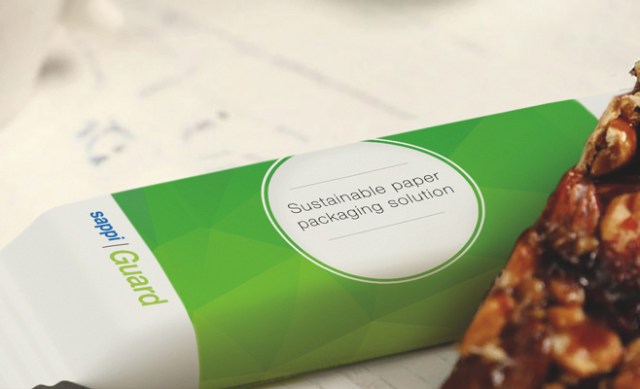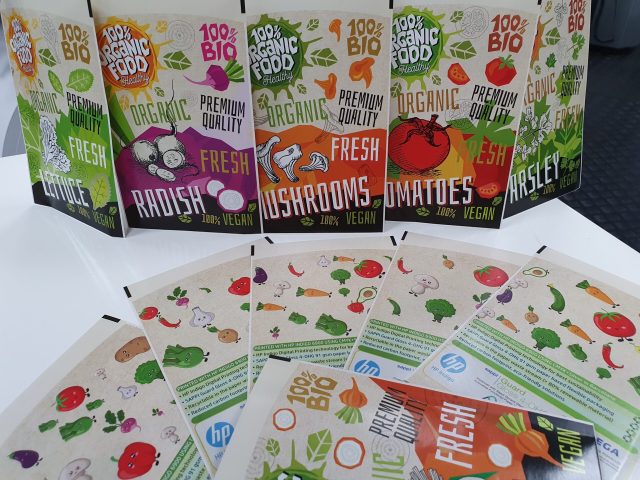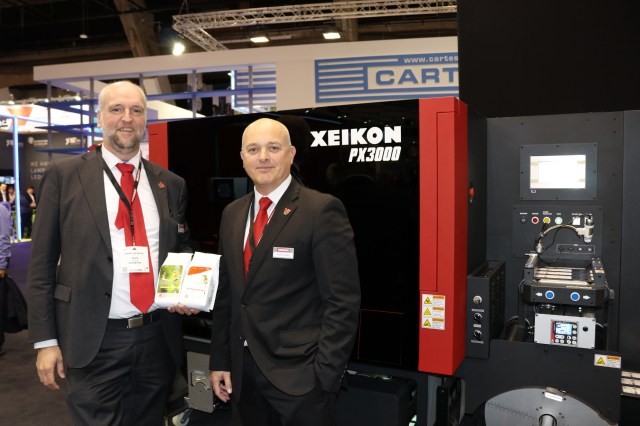
Pictured above: Frank Jacobs, market intel and senior product manager at Flint Group Digital and Alexander Schröder, senior product application engineer at Sappi Europe
Sappi and Xeikon have partnered to test the suitability of Titon dry toner technology combined with paper-based packaging for direct, digital printing of flexible packaging offering print quality, product safety and recyclability.
With Xeikon’s latest dry toner innovation, Titon and the Xeikon TX500, the company has set its sights on the paper-based flexible packaging market, which Sappi has been reporting as experiencing strong growth due to demand for resource-saving, recyclable and plastic-free alternatives from end-users as well as brand owners and converters.
According to Flint Group Digital market intel and senior product manager Frank Jacobs, the demands on inks for direct printing on paper-based materials for applications in the flexible packaging sector are very high.
“Over and above ensuring a good print result, the inks need to be extremely resistant throughout the packaging process and insensitive to temperature, e.g. for heat-sealing. And, especially for applications in the food sector, they also need to be odourless, tasteless, food-safe and migration-proof,” said Jacobs.
With Titon, Xeikon is setting out to meet the industry’s need for environmentally friendly and product-safe packaging production.
The new toner formulation combines the best features of toners and UV inks, merging dry toner’s food-safe and odourless properties with the particular resistance to chemicals and mechanical abrasion of UV inkjet ink.
It also withstands temperatures up to 260°C, ensuring packaging integrity and product protection. Thanks to its unique formulation, Titon can print directly onto paper-based packaging materials without additional varnishing or lamination to protect the print.
Xeikon coupled up with Sappi to test its extensive portfolio of paper-based packaging solutions. Since the beginning of the collaboration at the end of 2022, extensive tests have revealed two qualities that work exceptionally well with the toner.
Sappi market manager for packaging solutions Sibylle Hajostek said, “We achieved the best printing results with our innovative functional papers Sappi Seal Silk with a 67 grams per square metre basis weight and Sappi AvantGuard S Natural in 75 grams per square metre grammage.
“Both papers have an exceptionally high-quality appeal and were developed specifically for the flexible packaging market. The results we achieved in combination with the Titon technology left absolutely nothing to be desired – neither visually nor functionally.”
The one-side coated, heat-sealable Seal Silk is recommended for standard flexible packaging in the food and non-food sectors. In contrast, the uncoated, heat-sealable AvantGuard S Natural high-barrier paper is equally suitable for various flexible packaging applications in the food and non-food markets.

Jacobs added, “The print image we created in combination with the Sappi papers was nothing less than phenomenal. Results like these on paper-based substrates can otherwise only be achieved with flexo printing.”
The results of the tests with brand owners and converters were so impressive that Xeikon’s customer ACM Plastic in Italy is now permanently producing Sappi barrier paper with further test runs on AvantGuard S Gloss.
“It would appear that an engineer at ACM couldn’t wait to test more substrates from Sappi,” said Jacobs. “Just like the other two grades, AvantGuard S Gloss has so far shown the best visual and functional results – without primer or varnish. To say the least, it’s very promising. And we’re just at the beginning of this journey.”
The two partners embarked on this journey together, focussing on a resource-conserving approach to nature.
Thanks to Titon technology, no additional processing steps are necessary. Complete recycling of the entire packaging in the paper waste stream is possible with Sappi’s recyclable barrier paper-based solutions.
The technology passed all criteria of the Nestlé Standard on Printing Inks for Food Packaging, the EUPIA Exclusion Policy for Printing Inks, the Swiss Ordinance, as well as what is known about the German Ink Ordinance and other migration tests with flying colours.
This makes the combination of Titon technology and Sappi’s paper-based solution suitable for a wide range of applications with direct or indirect food contact, enabling applications previously only possible with conventional flexo presses.


